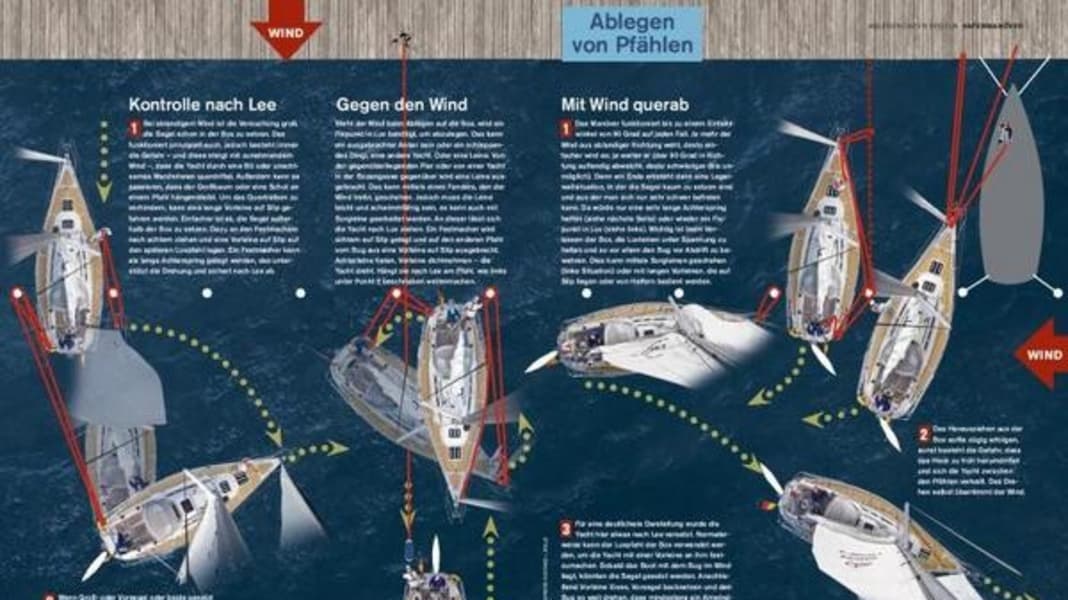
It is part of good seamanship and proves that the skipper is a master of his trade. It is worth practising the manoeuvre - because sometimes it is the only option.
Like mooring, casting off under sail is one of the basic skills that a skipper should have. This is precisely because the likelihood of having to fall back on this knowledge is very low nowadays. This may seem contradictory, but on closer inspection it makes perfect sense.
When auxiliary engines on sailing yachts were not yet a matter of course and were by no means reliable, the question of whether you had to be able to perform these manoeuvres did not arise. They were simply necessary to get out of the harbour. Modern technology, on the other hand, has almost made the art of sailing from a standing start a thing of the past. Engines are durable and reliable, and harbours have often become too narrow to manoeuvre safely. Which is why not using the engine is forbidden in some places.
And yet the manoeuvre should be mastered. Why do you think every beginner learns that the sails should be clear to set when casting off, even when leaving the harbour under engine power? Because the auxiliary drive can fail and the safest engine on a yacht is the sails. There are many more not-so-rare scenarios in this regard, such as a defective engine and the engine service only being available in the next harbour. Only skippers who know how to handle their yacht without a jockey can get there.
Another reason to be able to cast off under sail is this: the manoeuvre proves the skipper to be a good craftsman. Gliding out almost silently without waking your neighbour or passing the last sail perfectly before leaving the harbour ensures the silent recognition of the watching captains. It also conveys the satisfaction that is hard to put into words when an unusual, somewhat more demanding task has been completed flawlessly. And last but not least, it even makes boat control under power safer. This is because manoeuvres without engine power require more forethought and sensitivity, allowing the skipper to get to know his yacht and all its idiosyncrasies much better.
We have summarised the most important casting off variants under sail in the usual step-by-step instructions from a bird's eye view in the current issue.
